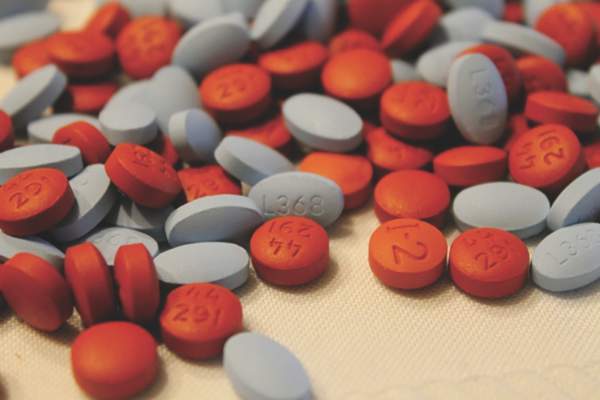User login
Trained interpreters essential for treating non–English-speaking patients
NEW YORK – Clinicians should resist the temptation to use untrained interpreters, such as a child, another relative, or their own limited language skills, when treating patients who cannot communicate in English, according to an expert reviewing this issue at the American Academy of Dermatology summer meeting.
In clinical encounters with patients who have limited English proficiency, “ reported Amy Y.Y. Chen, MD, who is affiliated with Central Connecticut Dermatology in Canton.
In many situations, interpreter services are required by law. This includes a provision of the 1963 Civil Rights Act that specifies these services should be made available to any individual with limited English proficiency receiving federal financial assistance (with the exception of Medicare Part B).
In reviewing this and other laws, Dr. Chen explained that many prohibitions are explicit. For example, it is against the law for clinicians to communicate with the patient through children, whether or not they are related to the patient. A patient’s adult companions are also prohibited from interpreting unless the patient has provided express permission.
Despite the rules, some clinicians might be tempted to forgo a translator when none is readily available, opting for an improvised solution. Dr. Chen said that this is ill advised even when it is not illegal.
“There are a lot of potential problems with using nonprofessional interpreters, starting with the issue of confidentiality,” Dr. Chen warned.
As defined by the Department of Health & Human Services, a qualified interpreter establishes competency by developing familiarity with specialized terminology; by communicating accurately, effectively, and impartially; and by recognizing the ethical issues, including confidentiality, essential to their role.
By itself, language fluency might not be sufficient. Many physicians have conversational fluency in one or more languages other than English, but Dr. Chen pointed out that complex and nuanced clinical descriptions might be difficult to follow for a nonnative speaker. Moreover, many individuals who have no problem posing questions in a foreign language don’t do nearly as well in following the answers.
As interpreters, family members can be particularly problematic. In addition to the issues of confidentiality and medical terminology, a family member might have his or her own agenda that influences how questions and answers are conveyed.
Moreover, family members and others untrained in translating might edit answers based on their own sense of relevance. Many clinicians working through an interpreter will recognize the experience of receiving a yes or no answer after a lengthy discussion between a nontrained interpreter and patient. In such situations, the clinician can reasonably worry that important information was lost.
Typically, major hospitals already offer a systematic approach to providing interpreters when needed, but physicians working in private practice or other smaller practice settings might not. According to Dr. Chen, who recently collaborated on review of this issue (J Am Acad Dermatol. 2019 Mar;80:829-31), they should.
Interpreter services are available by telephone or Internet. Fees typically fall in the range of $2-$5 per minute. In offices with bilingual staff members, formal medical interpreter training might make sense. The Certification Commission for Healthcare Interpreters and the National Board of Certification for Medical Interpreters can help in this process.
When using a medical interpreter, Dr. Chen had some tips.
“Maintain eye contact and talk to the patient,” said Dr. Chen, suggesting that the interpreter, if present in the room, be seated next to or behind the patient. Whether the interpreter is in the room or participating remotely, Dr. Chen advised against speaking through the interpreter with such phases as “tell her that.” Rather, she advised speaking directly to the patient with the interpreter providing the translation.
More practically, Dr. Chen recommended speaking slowly and posing only one question at a time. She also recommended strategies to elicit reassurance that the patient has understood what was communicated. Not least, she recommended a “show me” approach in which a patient can repeat or demonstrate what he or she has learned.
Citing evidence that poor and incomplete translation contributes to medical errors and patient dissatisfaction, Dr. Chen reiterated that engaging unbiased trained translators is advisable for good clinical care even if it were not mandated by law.
NEW YORK – Clinicians should resist the temptation to use untrained interpreters, such as a child, another relative, or their own limited language skills, when treating patients who cannot communicate in English, according to an expert reviewing this issue at the American Academy of Dermatology summer meeting.
In clinical encounters with patients who have limited English proficiency, “ reported Amy Y.Y. Chen, MD, who is affiliated with Central Connecticut Dermatology in Canton.
In many situations, interpreter services are required by law. This includes a provision of the 1963 Civil Rights Act that specifies these services should be made available to any individual with limited English proficiency receiving federal financial assistance (with the exception of Medicare Part B).
In reviewing this and other laws, Dr. Chen explained that many prohibitions are explicit. For example, it is against the law for clinicians to communicate with the patient through children, whether or not they are related to the patient. A patient’s adult companions are also prohibited from interpreting unless the patient has provided express permission.
Despite the rules, some clinicians might be tempted to forgo a translator when none is readily available, opting for an improvised solution. Dr. Chen said that this is ill advised even when it is not illegal.
“There are a lot of potential problems with using nonprofessional interpreters, starting with the issue of confidentiality,” Dr. Chen warned.
As defined by the Department of Health & Human Services, a qualified interpreter establishes competency by developing familiarity with specialized terminology; by communicating accurately, effectively, and impartially; and by recognizing the ethical issues, including confidentiality, essential to their role.
By itself, language fluency might not be sufficient. Many physicians have conversational fluency in one or more languages other than English, but Dr. Chen pointed out that complex and nuanced clinical descriptions might be difficult to follow for a nonnative speaker. Moreover, many individuals who have no problem posing questions in a foreign language don’t do nearly as well in following the answers.
As interpreters, family members can be particularly problematic. In addition to the issues of confidentiality and medical terminology, a family member might have his or her own agenda that influences how questions and answers are conveyed.
Moreover, family members and others untrained in translating might edit answers based on their own sense of relevance. Many clinicians working through an interpreter will recognize the experience of receiving a yes or no answer after a lengthy discussion between a nontrained interpreter and patient. In such situations, the clinician can reasonably worry that important information was lost.
Typically, major hospitals already offer a systematic approach to providing interpreters when needed, but physicians working in private practice or other smaller practice settings might not. According to Dr. Chen, who recently collaborated on review of this issue (J Am Acad Dermatol. 2019 Mar;80:829-31), they should.
Interpreter services are available by telephone or Internet. Fees typically fall in the range of $2-$5 per minute. In offices with bilingual staff members, formal medical interpreter training might make sense. The Certification Commission for Healthcare Interpreters and the National Board of Certification for Medical Interpreters can help in this process.
When using a medical interpreter, Dr. Chen had some tips.
“Maintain eye contact and talk to the patient,” said Dr. Chen, suggesting that the interpreter, if present in the room, be seated next to or behind the patient. Whether the interpreter is in the room or participating remotely, Dr. Chen advised against speaking through the interpreter with such phases as “tell her that.” Rather, she advised speaking directly to the patient with the interpreter providing the translation.
More practically, Dr. Chen recommended speaking slowly and posing only one question at a time. She also recommended strategies to elicit reassurance that the patient has understood what was communicated. Not least, she recommended a “show me” approach in which a patient can repeat or demonstrate what he or she has learned.
Citing evidence that poor and incomplete translation contributes to medical errors and patient dissatisfaction, Dr. Chen reiterated that engaging unbiased trained translators is advisable for good clinical care even if it were not mandated by law.
NEW YORK – Clinicians should resist the temptation to use untrained interpreters, such as a child, another relative, or their own limited language skills, when treating patients who cannot communicate in English, according to an expert reviewing this issue at the American Academy of Dermatology summer meeting.
In clinical encounters with patients who have limited English proficiency, “ reported Amy Y.Y. Chen, MD, who is affiliated with Central Connecticut Dermatology in Canton.
In many situations, interpreter services are required by law. This includes a provision of the 1963 Civil Rights Act that specifies these services should be made available to any individual with limited English proficiency receiving federal financial assistance (with the exception of Medicare Part B).
In reviewing this and other laws, Dr. Chen explained that many prohibitions are explicit. For example, it is against the law for clinicians to communicate with the patient through children, whether or not they are related to the patient. A patient’s adult companions are also prohibited from interpreting unless the patient has provided express permission.
Despite the rules, some clinicians might be tempted to forgo a translator when none is readily available, opting for an improvised solution. Dr. Chen said that this is ill advised even when it is not illegal.
“There are a lot of potential problems with using nonprofessional interpreters, starting with the issue of confidentiality,” Dr. Chen warned.
As defined by the Department of Health & Human Services, a qualified interpreter establishes competency by developing familiarity with specialized terminology; by communicating accurately, effectively, and impartially; and by recognizing the ethical issues, including confidentiality, essential to their role.
By itself, language fluency might not be sufficient. Many physicians have conversational fluency in one or more languages other than English, but Dr. Chen pointed out that complex and nuanced clinical descriptions might be difficult to follow for a nonnative speaker. Moreover, many individuals who have no problem posing questions in a foreign language don’t do nearly as well in following the answers.
As interpreters, family members can be particularly problematic. In addition to the issues of confidentiality and medical terminology, a family member might have his or her own agenda that influences how questions and answers are conveyed.
Moreover, family members and others untrained in translating might edit answers based on their own sense of relevance. Many clinicians working through an interpreter will recognize the experience of receiving a yes or no answer after a lengthy discussion between a nontrained interpreter and patient. In such situations, the clinician can reasonably worry that important information was lost.
Typically, major hospitals already offer a systematic approach to providing interpreters when needed, but physicians working in private practice or other smaller practice settings might not. According to Dr. Chen, who recently collaborated on review of this issue (J Am Acad Dermatol. 2019 Mar;80:829-31), they should.
Interpreter services are available by telephone or Internet. Fees typically fall in the range of $2-$5 per minute. In offices with bilingual staff members, formal medical interpreter training might make sense. The Certification Commission for Healthcare Interpreters and the National Board of Certification for Medical Interpreters can help in this process.
When using a medical interpreter, Dr. Chen had some tips.
“Maintain eye contact and talk to the patient,” said Dr. Chen, suggesting that the interpreter, if present in the room, be seated next to or behind the patient. Whether the interpreter is in the room or participating remotely, Dr. Chen advised against speaking through the interpreter with such phases as “tell her that.” Rather, she advised speaking directly to the patient with the interpreter providing the translation.
More practically, Dr. Chen recommended speaking slowly and posing only one question at a time. She also recommended strategies to elicit reassurance that the patient has understood what was communicated. Not least, she recommended a “show me” approach in which a patient can repeat or demonstrate what he or she has learned.
Citing evidence that poor and incomplete translation contributes to medical errors and patient dissatisfaction, Dr. Chen reiterated that engaging unbiased trained translators is advisable for good clinical care even if it were not mandated by law.
EXPERT ANALYSIS FROM SUMMER AAD 2019
As patients, physicians fare nearly the same as everyone else
For patients, including patients who are physicians, knowledge isn’t power, according to investigators.
A literature review and retrospective analysis of more than 35,000 physicians treated as patients revealed minimal associations between level of medical knowledge and quality of health outcomes, reported Michael D. Frakes, PhD, of Duke University, Durham, N.C., and colleagues. The study findings stand in opposition to the “widely prevailing view” that information and medical knowledge among patients are integral to realizing high-quality, low-cost health care, the investigators noted.
“[This] research is particularly relevant to modern discussions and debates about the consumer-driven health care movement and the use of plans with high deductibles and high copayments to encourage greater patient and consumer involvement in health care decision making,” Dr. Frakes said in an interview. “Recent research has suggested that the financial incentives created by such structures discourage the use of both low-value care and high-value care. Some have argued that greater disclosure of information to patients may address this concern and steer patients towards high-value decisions. Our results cast doubt on the potential for information initiatives alone to meet this aim.”
The study is one of the first of its kind, the investigators noted in the National Bureau of Economic Research working paper. Other than a 2016 publication that found that physician mothers were less likely to have cesarean sections (Am Econ J: Econ Policy. 2016;8[1]:115-41), “there is no work which has been able to study the role of physicians as patients,” they wrote.
To fill this gap, the investigators turned to a unique data source: The Military Health System, which provides insurance to active and retired military personnel and their families. Military Health System spending exceeds $50 billion per year, constituting a major portion of American health care expenditures, and with more than 35,000 military physicians treated as patients, the dataset is highly relevant and powerful. The investigators objectively evaluated health outcomes by focusing on evidence-based, measurable clinical decisions deemed “high value” or “low value,” comparing how the frequency of these choices related with physician versus nonphysician patient status.
Coauthor Jonathan Gruber, PhD, of the Massachusetts Institute of Technology in Cambridge, Mass., explained this methodology in an interview. “The literature is clear that high-value care has positive health outcomes with relatively small increases in health care spending, and that low-value care has no impact on health outcomes with large increases in spending.”
“One concern with this analysis, of course, is that physicians may be of different health statuses and have different tastes for medical interventions than nonphysicians,” the investigators wrote. They addressed this problem in five ways, by focusing on widely accepted medical standards that apply to all patients; examining both high- and low-value care to eliminate one-sided bias; controlling for underlying health differences across groups; comparing physicians with other military officers to account for underlying tastes; and evaluating military officer dependents in comparison with physician dependents, the latter of whom may benefit from medical knowledge by virtue of personal relationship.
“Our results suggest that physicians do only slightly better than nonphysicians,” the investigators wrote, “but not by much and not always.” Low-value care was slightly less common among physicians, but this difference was described as “modest.” Analysis of high-value care was more mixed, with some results supporting equivalence between groups and others pointing to a slightly higher rate of high-value care among physician patients.
“These results provide a rough boundary on the extent to which additional information disclosure [beyond prevailing levels] can be expected to improve the delivery of health care in the U.S.,” the investigators wrote. “[M]ost of the explanation behind the over- and underutilization of low- and high-value services likely arises from factors other than informational deficiencies of patients.”
“Perhaps one interpretation of these findings is that patients remain generally deferential to the care recommendations of their treating physicians, even in the case of near fully informed patients,” the investigators wrote, noting that this interpretation aligns with a recent working paper that found that physicians play a greater role in selecting the site of MRI scans than patient cost-sharing factors.
Looking to the future, Dr. Gruber said that he and his colleagues plan on exploring “what drives this lack of response among physicians [as patients].”
The study was funded by the National Institute on Aging. The investigators reported no conflicts of interest.
SOURCE: Frakes MD et al. Natl Bur Econ Res. 2019 Jul. doi: 10.3386/w26038.
This article was updated 8/6/19.
For patients, including patients who are physicians, knowledge isn’t power, according to investigators.
A literature review and retrospective analysis of more than 35,000 physicians treated as patients revealed minimal associations between level of medical knowledge and quality of health outcomes, reported Michael D. Frakes, PhD, of Duke University, Durham, N.C., and colleagues. The study findings stand in opposition to the “widely prevailing view” that information and medical knowledge among patients are integral to realizing high-quality, low-cost health care, the investigators noted.
“[This] research is particularly relevant to modern discussions and debates about the consumer-driven health care movement and the use of plans with high deductibles and high copayments to encourage greater patient and consumer involvement in health care decision making,” Dr. Frakes said in an interview. “Recent research has suggested that the financial incentives created by such structures discourage the use of both low-value care and high-value care. Some have argued that greater disclosure of information to patients may address this concern and steer patients towards high-value decisions. Our results cast doubt on the potential for information initiatives alone to meet this aim.”
The study is one of the first of its kind, the investigators noted in the National Bureau of Economic Research working paper. Other than a 2016 publication that found that physician mothers were less likely to have cesarean sections (Am Econ J: Econ Policy. 2016;8[1]:115-41), “there is no work which has been able to study the role of physicians as patients,” they wrote.
To fill this gap, the investigators turned to a unique data source: The Military Health System, which provides insurance to active and retired military personnel and their families. Military Health System spending exceeds $50 billion per year, constituting a major portion of American health care expenditures, and with more than 35,000 military physicians treated as patients, the dataset is highly relevant and powerful. The investigators objectively evaluated health outcomes by focusing on evidence-based, measurable clinical decisions deemed “high value” or “low value,” comparing how the frequency of these choices related with physician versus nonphysician patient status.
Coauthor Jonathan Gruber, PhD, of the Massachusetts Institute of Technology in Cambridge, Mass., explained this methodology in an interview. “The literature is clear that high-value care has positive health outcomes with relatively small increases in health care spending, and that low-value care has no impact on health outcomes with large increases in spending.”
“One concern with this analysis, of course, is that physicians may be of different health statuses and have different tastes for medical interventions than nonphysicians,” the investigators wrote. They addressed this problem in five ways, by focusing on widely accepted medical standards that apply to all patients; examining both high- and low-value care to eliminate one-sided bias; controlling for underlying health differences across groups; comparing physicians with other military officers to account for underlying tastes; and evaluating military officer dependents in comparison with physician dependents, the latter of whom may benefit from medical knowledge by virtue of personal relationship.
“Our results suggest that physicians do only slightly better than nonphysicians,” the investigators wrote, “but not by much and not always.” Low-value care was slightly less common among physicians, but this difference was described as “modest.” Analysis of high-value care was more mixed, with some results supporting equivalence between groups and others pointing to a slightly higher rate of high-value care among physician patients.
“These results provide a rough boundary on the extent to which additional information disclosure [beyond prevailing levels] can be expected to improve the delivery of health care in the U.S.,” the investigators wrote. “[M]ost of the explanation behind the over- and underutilization of low- and high-value services likely arises from factors other than informational deficiencies of patients.”
“Perhaps one interpretation of these findings is that patients remain generally deferential to the care recommendations of their treating physicians, even in the case of near fully informed patients,” the investigators wrote, noting that this interpretation aligns with a recent working paper that found that physicians play a greater role in selecting the site of MRI scans than patient cost-sharing factors.
Looking to the future, Dr. Gruber said that he and his colleagues plan on exploring “what drives this lack of response among physicians [as patients].”
The study was funded by the National Institute on Aging. The investigators reported no conflicts of interest.
SOURCE: Frakes MD et al. Natl Bur Econ Res. 2019 Jul. doi: 10.3386/w26038.
This article was updated 8/6/19.
For patients, including patients who are physicians, knowledge isn’t power, according to investigators.
A literature review and retrospective analysis of more than 35,000 physicians treated as patients revealed minimal associations between level of medical knowledge and quality of health outcomes, reported Michael D. Frakes, PhD, of Duke University, Durham, N.C., and colleagues. The study findings stand in opposition to the “widely prevailing view” that information and medical knowledge among patients are integral to realizing high-quality, low-cost health care, the investigators noted.
“[This] research is particularly relevant to modern discussions and debates about the consumer-driven health care movement and the use of plans with high deductibles and high copayments to encourage greater patient and consumer involvement in health care decision making,” Dr. Frakes said in an interview. “Recent research has suggested that the financial incentives created by such structures discourage the use of both low-value care and high-value care. Some have argued that greater disclosure of information to patients may address this concern and steer patients towards high-value decisions. Our results cast doubt on the potential for information initiatives alone to meet this aim.”
The study is one of the first of its kind, the investigators noted in the National Bureau of Economic Research working paper. Other than a 2016 publication that found that physician mothers were less likely to have cesarean sections (Am Econ J: Econ Policy. 2016;8[1]:115-41), “there is no work which has been able to study the role of physicians as patients,” they wrote.
To fill this gap, the investigators turned to a unique data source: The Military Health System, which provides insurance to active and retired military personnel and their families. Military Health System spending exceeds $50 billion per year, constituting a major portion of American health care expenditures, and with more than 35,000 military physicians treated as patients, the dataset is highly relevant and powerful. The investigators objectively evaluated health outcomes by focusing on evidence-based, measurable clinical decisions deemed “high value” or “low value,” comparing how the frequency of these choices related with physician versus nonphysician patient status.
Coauthor Jonathan Gruber, PhD, of the Massachusetts Institute of Technology in Cambridge, Mass., explained this methodology in an interview. “The literature is clear that high-value care has positive health outcomes with relatively small increases in health care spending, and that low-value care has no impact on health outcomes with large increases in spending.”
“One concern with this analysis, of course, is that physicians may be of different health statuses and have different tastes for medical interventions than nonphysicians,” the investigators wrote. They addressed this problem in five ways, by focusing on widely accepted medical standards that apply to all patients; examining both high- and low-value care to eliminate one-sided bias; controlling for underlying health differences across groups; comparing physicians with other military officers to account for underlying tastes; and evaluating military officer dependents in comparison with physician dependents, the latter of whom may benefit from medical knowledge by virtue of personal relationship.
“Our results suggest that physicians do only slightly better than nonphysicians,” the investigators wrote, “but not by much and not always.” Low-value care was slightly less common among physicians, but this difference was described as “modest.” Analysis of high-value care was more mixed, with some results supporting equivalence between groups and others pointing to a slightly higher rate of high-value care among physician patients.
“These results provide a rough boundary on the extent to which additional information disclosure [beyond prevailing levels] can be expected to improve the delivery of health care in the U.S.,” the investigators wrote. “[M]ost of the explanation behind the over- and underutilization of low- and high-value services likely arises from factors other than informational deficiencies of patients.”
“Perhaps one interpretation of these findings is that patients remain generally deferential to the care recommendations of their treating physicians, even in the case of near fully informed patients,” the investigators wrote, noting that this interpretation aligns with a recent working paper that found that physicians play a greater role in selecting the site of MRI scans than patient cost-sharing factors.
Looking to the future, Dr. Gruber said that he and his colleagues plan on exploring “what drives this lack of response among physicians [as patients].”
The study was funded by the National Institute on Aging. The investigators reported no conflicts of interest.
SOURCE: Frakes MD et al. Natl Bur Econ Res. 2019 Jul. doi: 10.3386/w26038.
This article was updated 8/6/19.
FROM THE NATIONAL BUREAU OF ECONOMIC RESEARCH
NSAID use in high-risk patients not linked with short-term, safety-related adverse event
Clinical question: In patients with hypertension, chronic kidney disease, or heart failure presenting with a musculoskeletal disorder, how frequently are prescription NSAIDs dispensed and are there associated short-term (between 7-38 days of visit) safety-related outcomes?
Background: Multiple expert panels recommend against the use of NSAIDs in patients with hypertension (HTN), chronic kidney disease (CKD), or heart failure (HF). Previous studies have demonstrated an increased risk of cardiovascular events and renal injury with long-term NSAID use.
Study design: Retrospective cohort study.
Setting: Population-based administrative claims database identified primary care visits in Ontario.
Synopsis: Among 814,049 patients aged 65 years and older with high-risk medical conditions, 9.3% were prescribed NSAIDs. Of those prescribed NSAIDS, a vast majority had only HTN (90.8%). There was substantial variation in NSAID prescriptions among physicians (range 0.9%-69.2%; median, 11%). During the study period, there was a decline in the frequency of NSAID prescriptions. Those patients with reduced odds to receive an NSAID prescription had CKD, HF, hospitalization in the past year, or prior opiate use. Of 35,552 matched patient pairs either exposed or not exposed to NSAIDs (not controlled for disease severity), there was a similar rate of cardiac complications (288 vs. 279), renal complications (34 vs. 33), and death (27 vs. 30).
Patients with current opiate prescriptions were excluded. This study did not capture those patients taking ASA, over-the-counter formulations or topical NSAIDs.
Bottom line: NSAIDs are frequently prescribed among older adults with high-risk conditions, and short-term use of NSAIDs was not associated with increased cardiovascular or renal safety–related outcomes in this study. In otherwise healthy patients with HTN and musculoskeletal pain, it might be reasonable to trial a short course of NSAIDs with close monitoring.
Citation: Bouck Z et al. Frequency and associations of prescription nonsteroidal anti-inflammatory drug use among patients with a musculoskeletal disorder and hypertension, heart failure, or chronic kidney disease. JAMA Intern Med. 2018 Nov;178(11):1516-25.
Dr. Stanley is assistant professor of medicine at Northwestern University Feinberg School of Medicine and a hospitalist at Northwestern Memorial Hospital, both in Chicago.
Clinical question: In patients with hypertension, chronic kidney disease, or heart failure presenting with a musculoskeletal disorder, how frequently are prescription NSAIDs dispensed and are there associated short-term (between 7-38 days of visit) safety-related outcomes?
Background: Multiple expert panels recommend against the use of NSAIDs in patients with hypertension (HTN), chronic kidney disease (CKD), or heart failure (HF). Previous studies have demonstrated an increased risk of cardiovascular events and renal injury with long-term NSAID use.
Study design: Retrospective cohort study.
Setting: Population-based administrative claims database identified primary care visits in Ontario.
Synopsis: Among 814,049 patients aged 65 years and older with high-risk medical conditions, 9.3% were prescribed NSAIDs. Of those prescribed NSAIDS, a vast majority had only HTN (90.8%). There was substantial variation in NSAID prescriptions among physicians (range 0.9%-69.2%; median, 11%). During the study period, there was a decline in the frequency of NSAID prescriptions. Those patients with reduced odds to receive an NSAID prescription had CKD, HF, hospitalization in the past year, or prior opiate use. Of 35,552 matched patient pairs either exposed or not exposed to NSAIDs (not controlled for disease severity), there was a similar rate of cardiac complications (288 vs. 279), renal complications (34 vs. 33), and death (27 vs. 30).
Patients with current opiate prescriptions were excluded. This study did not capture those patients taking ASA, over-the-counter formulations or topical NSAIDs.
Bottom line: NSAIDs are frequently prescribed among older adults with high-risk conditions, and short-term use of NSAIDs was not associated with increased cardiovascular or renal safety–related outcomes in this study. In otherwise healthy patients with HTN and musculoskeletal pain, it might be reasonable to trial a short course of NSAIDs with close monitoring.
Citation: Bouck Z et al. Frequency and associations of prescription nonsteroidal anti-inflammatory drug use among patients with a musculoskeletal disorder and hypertension, heart failure, or chronic kidney disease. JAMA Intern Med. 2018 Nov;178(11):1516-25.
Dr. Stanley is assistant professor of medicine at Northwestern University Feinberg School of Medicine and a hospitalist at Northwestern Memorial Hospital, both in Chicago.
Clinical question: In patients with hypertension, chronic kidney disease, or heart failure presenting with a musculoskeletal disorder, how frequently are prescription NSAIDs dispensed and are there associated short-term (between 7-38 days of visit) safety-related outcomes?
Background: Multiple expert panels recommend against the use of NSAIDs in patients with hypertension (HTN), chronic kidney disease (CKD), or heart failure (HF). Previous studies have demonstrated an increased risk of cardiovascular events and renal injury with long-term NSAID use.
Study design: Retrospective cohort study.
Setting: Population-based administrative claims database identified primary care visits in Ontario.
Synopsis: Among 814,049 patients aged 65 years and older with high-risk medical conditions, 9.3% were prescribed NSAIDs. Of those prescribed NSAIDS, a vast majority had only HTN (90.8%). There was substantial variation in NSAID prescriptions among physicians (range 0.9%-69.2%; median, 11%). During the study period, there was a decline in the frequency of NSAID prescriptions. Those patients with reduced odds to receive an NSAID prescription had CKD, HF, hospitalization in the past year, or prior opiate use. Of 35,552 matched patient pairs either exposed or not exposed to NSAIDs (not controlled for disease severity), there was a similar rate of cardiac complications (288 vs. 279), renal complications (34 vs. 33), and death (27 vs. 30).
Patients with current opiate prescriptions were excluded. This study did not capture those patients taking ASA, over-the-counter formulations or topical NSAIDs.
Bottom line: NSAIDs are frequently prescribed among older adults with high-risk conditions, and short-term use of NSAIDs was not associated with increased cardiovascular or renal safety–related outcomes in this study. In otherwise healthy patients with HTN and musculoskeletal pain, it might be reasonable to trial a short course of NSAIDs with close monitoring.
Citation: Bouck Z et al. Frequency and associations of prescription nonsteroidal anti-inflammatory drug use among patients with a musculoskeletal disorder and hypertension, heart failure, or chronic kidney disease. JAMA Intern Med. 2018 Nov;178(11):1516-25.
Dr. Stanley is assistant professor of medicine at Northwestern University Feinberg School of Medicine and a hospitalist at Northwestern Memorial Hospital, both in Chicago.
Efficacy of DOACs vs. warfarin in high-risk atrial fibrillation patients
Background: DOACs have been shown to be efficacious in randomized, controlled trials, but these trials did not include high-risk patients. This trial studies the efficacy and safety of DOACs in elderly patients with new-onset atrial fibrillation who are at high risk of both ischemic stroke and major bleeding.
Study design: Retrospective comparative effectiveness analysis.
Setting: Data from a population-based Medicare beneficiaries database.
Synopsis: Data from 213,705 Medicare beneficiaries with new-onset atrial fibrillation on rivaroxaban, dabigatran, or warfarin were analyzed. The investigators calculated CHA2DS2-VASc, HAS-BLED, and Gagne Index comorbidity scores for each participant to assess comorbidity burden and categorize patients into low-, medium-, and high-morbidity categories.
Researchers then used three-way propensity matching, accounting for each morbidity category and anticoagulation medication to compare outcomes. Cox proportion regression models were used to adjust for risk and compare outcomes of ischemic stroke and major hemorrhage in matched participants in each anticoagulant group.
Primary outcomes of the study were ischemic stroke and major hemorrhage, which were determined based on ICD-9 codes. The investigators did not find a significant difference among anticoagulants regardless of the morbidity level for risk-adjusted ischemic stroke rates. Participants in the dabigatran group had lower rates of risk-adjusted major hemorrhage, compared with the warfarin group, regardless of morbidity category. The dabigatran group also had lower major hemorrhage risk, compared with the rivaroxaban group, especially in moderate- and high-morbidity category. Lastly, risk-adjusted rates of mortality were lower in the dabigatran and rivaroxaban groups, compared with the warfarin group, and there was no difference between the dabigatran and rivaroxaban groups with regards to mortality.
Bottom line: Rivaroxaban and dabigatran are each equally effective, compared with warfarin, in preventing ischemic strokes in elderly patients with new-onset atrial fibrillation and multiple comorbidities. However, patients on dabigatran appear to be at less risk of major bleeding, compared with warfarin and rivaroxaban.
Citation: Mentias A et al. Assessment of outcomes of treatment with oral anticoagulants in patients with atrial fibrillation and multiple chronic conditions. JAMA Netw Open. 2018 Sep 28;1(5):e182870.
Dr. Puri is assistant professor of medicine at Northwestern University Feinberg School of Medicine and a hospitalist at Northwestern Memorial Hospital, both in Chicago.
Background: DOACs have been shown to be efficacious in randomized, controlled trials, but these trials did not include high-risk patients. This trial studies the efficacy and safety of DOACs in elderly patients with new-onset atrial fibrillation who are at high risk of both ischemic stroke and major bleeding.
Study design: Retrospective comparative effectiveness analysis.
Setting: Data from a population-based Medicare beneficiaries database.
Synopsis: Data from 213,705 Medicare beneficiaries with new-onset atrial fibrillation on rivaroxaban, dabigatran, or warfarin were analyzed. The investigators calculated CHA2DS2-VASc, HAS-BLED, and Gagne Index comorbidity scores for each participant to assess comorbidity burden and categorize patients into low-, medium-, and high-morbidity categories.
Researchers then used three-way propensity matching, accounting for each morbidity category and anticoagulation medication to compare outcomes. Cox proportion regression models were used to adjust for risk and compare outcomes of ischemic stroke and major hemorrhage in matched participants in each anticoagulant group.
Primary outcomes of the study were ischemic stroke and major hemorrhage, which were determined based on ICD-9 codes. The investigators did not find a significant difference among anticoagulants regardless of the morbidity level for risk-adjusted ischemic stroke rates. Participants in the dabigatran group had lower rates of risk-adjusted major hemorrhage, compared with the warfarin group, regardless of morbidity category. The dabigatran group also had lower major hemorrhage risk, compared with the rivaroxaban group, especially in moderate- and high-morbidity category. Lastly, risk-adjusted rates of mortality were lower in the dabigatran and rivaroxaban groups, compared with the warfarin group, and there was no difference between the dabigatran and rivaroxaban groups with regards to mortality.
Bottom line: Rivaroxaban and dabigatran are each equally effective, compared with warfarin, in preventing ischemic strokes in elderly patients with new-onset atrial fibrillation and multiple comorbidities. However, patients on dabigatran appear to be at less risk of major bleeding, compared with warfarin and rivaroxaban.
Citation: Mentias A et al. Assessment of outcomes of treatment with oral anticoagulants in patients with atrial fibrillation and multiple chronic conditions. JAMA Netw Open. 2018 Sep 28;1(5):e182870.
Dr. Puri is assistant professor of medicine at Northwestern University Feinberg School of Medicine and a hospitalist at Northwestern Memorial Hospital, both in Chicago.
Background: DOACs have been shown to be efficacious in randomized, controlled trials, but these trials did not include high-risk patients. This trial studies the efficacy and safety of DOACs in elderly patients with new-onset atrial fibrillation who are at high risk of both ischemic stroke and major bleeding.
Study design: Retrospective comparative effectiveness analysis.
Setting: Data from a population-based Medicare beneficiaries database.
Synopsis: Data from 213,705 Medicare beneficiaries with new-onset atrial fibrillation on rivaroxaban, dabigatran, or warfarin were analyzed. The investigators calculated CHA2DS2-VASc, HAS-BLED, and Gagne Index comorbidity scores for each participant to assess comorbidity burden and categorize patients into low-, medium-, and high-morbidity categories.
Researchers then used three-way propensity matching, accounting for each morbidity category and anticoagulation medication to compare outcomes. Cox proportion regression models were used to adjust for risk and compare outcomes of ischemic stroke and major hemorrhage in matched participants in each anticoagulant group.
Primary outcomes of the study were ischemic stroke and major hemorrhage, which were determined based on ICD-9 codes. The investigators did not find a significant difference among anticoagulants regardless of the morbidity level for risk-adjusted ischemic stroke rates. Participants in the dabigatran group had lower rates of risk-adjusted major hemorrhage, compared with the warfarin group, regardless of morbidity category. The dabigatran group also had lower major hemorrhage risk, compared with the rivaroxaban group, especially in moderate- and high-morbidity category. Lastly, risk-adjusted rates of mortality were lower in the dabigatran and rivaroxaban groups, compared with the warfarin group, and there was no difference between the dabigatran and rivaroxaban groups with regards to mortality.
Bottom line: Rivaroxaban and dabigatran are each equally effective, compared with warfarin, in preventing ischemic strokes in elderly patients with new-onset atrial fibrillation and multiple comorbidities. However, patients on dabigatran appear to be at less risk of major bleeding, compared with warfarin and rivaroxaban.
Citation: Mentias A et al. Assessment of outcomes of treatment with oral anticoagulants in patients with atrial fibrillation and multiple chronic conditions. JAMA Netw Open. 2018 Sep 28;1(5):e182870.
Dr. Puri is assistant professor of medicine at Northwestern University Feinberg School of Medicine and a hospitalist at Northwestern Memorial Hospital, both in Chicago.
FDA approves Baqsimi nasal powder for emergency hypoglycemia treatment
in patients aged 4 years and older.
Injectable glucagon has been approved in the United States for several decades.
The safety and efficacy of the Baqsimi powder was assessed in two studies with adults with diabetes and one with pediatric patients. In all three studies, a single dose of Baqsimi was compared with a single dose of glucagon injection, and Baqsimi adequately raised blood sugar levels in response to insulin-induced hypoglycemia.
The most common adverse events associated with Baqsimi include nausea, vomiting, headache, upper respiratory tract irritation, watery eyes, redness of eyes, and itchiness. The safety profile is similar to that of injectable glucagon, with the addition of nasal- and eye-related symptoms because of the method of delivery.
“There are many products on the market for those who need insulin, but until now, people suffering from a severe hypoglycemic episode had to be treated with a glucagon injection that first had to be mixed in a several-step process. This new way to administer glucagon may simplify the process, which can be critical during an episode, especially since the patient may have lost consciousness or may be having a seizure. In those situations, we want the process to treat the suffering person to be as simple as possible,” Janet Woodcock, MD, director of the FDA’s Center for Drug Evaluation and Research, said in the press release.
Find the full press release on the FDA website.
in patients aged 4 years and older.
Injectable glucagon has been approved in the United States for several decades.
The safety and efficacy of the Baqsimi powder was assessed in two studies with adults with diabetes and one with pediatric patients. In all three studies, a single dose of Baqsimi was compared with a single dose of glucagon injection, and Baqsimi adequately raised blood sugar levels in response to insulin-induced hypoglycemia.
The most common adverse events associated with Baqsimi include nausea, vomiting, headache, upper respiratory tract irritation, watery eyes, redness of eyes, and itchiness. The safety profile is similar to that of injectable glucagon, with the addition of nasal- and eye-related symptoms because of the method of delivery.
“There are many products on the market for those who need insulin, but until now, people suffering from a severe hypoglycemic episode had to be treated with a glucagon injection that first had to be mixed in a several-step process. This new way to administer glucagon may simplify the process, which can be critical during an episode, especially since the patient may have lost consciousness or may be having a seizure. In those situations, we want the process to treat the suffering person to be as simple as possible,” Janet Woodcock, MD, director of the FDA’s Center for Drug Evaluation and Research, said in the press release.
Find the full press release on the FDA website.
in patients aged 4 years and older.
Injectable glucagon has been approved in the United States for several decades.
The safety and efficacy of the Baqsimi powder was assessed in two studies with adults with diabetes and one with pediatric patients. In all three studies, a single dose of Baqsimi was compared with a single dose of glucagon injection, and Baqsimi adequately raised blood sugar levels in response to insulin-induced hypoglycemia.
The most common adverse events associated with Baqsimi include nausea, vomiting, headache, upper respiratory tract irritation, watery eyes, redness of eyes, and itchiness. The safety profile is similar to that of injectable glucagon, with the addition of nasal- and eye-related symptoms because of the method of delivery.
“There are many products on the market for those who need insulin, but until now, people suffering from a severe hypoglycemic episode had to be treated with a glucagon injection that first had to be mixed in a several-step process. This new way to administer glucagon may simplify the process, which can be critical during an episode, especially since the patient may have lost consciousness or may be having a seizure. In those situations, we want the process to treat the suffering person to be as simple as possible,” Janet Woodcock, MD, director of the FDA’s Center for Drug Evaluation and Research, said in the press release.
Find the full press release on the FDA website.
Do prophylactic PPIs improve mortality in critically ill patients?
Background: Prophylactic proton pump inhibitors (PPIs) are used frequently in an ICU setting for acid suppression, but this is an off-label use and the evidence in support of using PPI prophylactically is limited. In fact, PPIs have been associated with adverse effects in recent literature including Clostridium difficile infection, myocardial ischemia, and pneumonia.
Study design: Multicenter, parallel group, blinded clinical trial that compared PPI with placebo.
Setting: 78 sites in the United States and Canada.
Synopsis: Among 3,298 total participants, 90-day mortality was 31.1% in the pantoprazole group and 30.4% in the placebo group, which is a relative risk of 1.02 (95% confidence interval, 0.91-1.13; P = .76).
The researchers also used a composite outcome comprising clinically important gastrointestinal bleeding, Clostridium difficile infection, new onset pneumonia, and acute myocardial ischemia. Overall, 21.9% in the pantoprazole group and 22.6% participants in the placebo group had the composite outcome – a relative risk of 0.96 (95% CI, 0.83-1.11). Clinically important gastrointestinal bleeding was the only component of the composite outcome that was significantly different between groups, occurring less often in the pantoprazole group – the relative risk was 0.58 (95% CI, 0.40-0.86).
Bottom line: Pantoprazole does not differ significantly, compared with placebo, with regard to 90-day mortality and a composite outcome of clinically significant events.
Citation: Krag M et al. Pantoprazole in patients at risk of gastrointestinal bleeding in the ICU. N Eng J Med. 2018 Dec 6;379(23):2199-208.
Dr. Puri is assistant professor of medicine at Northwestern University Feinberg School of Medicine and a hospitalist at Northwestern Memorial Hospital, both in Chicago.
Background: Prophylactic proton pump inhibitors (PPIs) are used frequently in an ICU setting for acid suppression, but this is an off-label use and the evidence in support of using PPI prophylactically is limited. In fact, PPIs have been associated with adverse effects in recent literature including Clostridium difficile infection, myocardial ischemia, and pneumonia.
Study design: Multicenter, parallel group, blinded clinical trial that compared PPI with placebo.
Setting: 78 sites in the United States and Canada.
Synopsis: Among 3,298 total participants, 90-day mortality was 31.1% in the pantoprazole group and 30.4% in the placebo group, which is a relative risk of 1.02 (95% confidence interval, 0.91-1.13; P = .76).
The researchers also used a composite outcome comprising clinically important gastrointestinal bleeding, Clostridium difficile infection, new onset pneumonia, and acute myocardial ischemia. Overall, 21.9% in the pantoprazole group and 22.6% participants in the placebo group had the composite outcome – a relative risk of 0.96 (95% CI, 0.83-1.11). Clinically important gastrointestinal bleeding was the only component of the composite outcome that was significantly different between groups, occurring less often in the pantoprazole group – the relative risk was 0.58 (95% CI, 0.40-0.86).
Bottom line: Pantoprazole does not differ significantly, compared with placebo, with regard to 90-day mortality and a composite outcome of clinically significant events.
Citation: Krag M et al. Pantoprazole in patients at risk of gastrointestinal bleeding in the ICU. N Eng J Med. 2018 Dec 6;379(23):2199-208.
Dr. Puri is assistant professor of medicine at Northwestern University Feinberg School of Medicine and a hospitalist at Northwestern Memorial Hospital, both in Chicago.
Background: Prophylactic proton pump inhibitors (PPIs) are used frequently in an ICU setting for acid suppression, but this is an off-label use and the evidence in support of using PPI prophylactically is limited. In fact, PPIs have been associated with adverse effects in recent literature including Clostridium difficile infection, myocardial ischemia, and pneumonia.
Study design: Multicenter, parallel group, blinded clinical trial that compared PPI with placebo.
Setting: 78 sites in the United States and Canada.
Synopsis: Among 3,298 total participants, 90-day mortality was 31.1% in the pantoprazole group and 30.4% in the placebo group, which is a relative risk of 1.02 (95% confidence interval, 0.91-1.13; P = .76).
The researchers also used a composite outcome comprising clinically important gastrointestinal bleeding, Clostridium difficile infection, new onset pneumonia, and acute myocardial ischemia. Overall, 21.9% in the pantoprazole group and 22.6% participants in the placebo group had the composite outcome – a relative risk of 0.96 (95% CI, 0.83-1.11). Clinically important gastrointestinal bleeding was the only component of the composite outcome that was significantly different between groups, occurring less often in the pantoprazole group – the relative risk was 0.58 (95% CI, 0.40-0.86).
Bottom line: Pantoprazole does not differ significantly, compared with placebo, with regard to 90-day mortality and a composite outcome of clinically significant events.
Citation: Krag M et al. Pantoprazole in patients at risk of gastrointestinal bleeding in the ICU. N Eng J Med. 2018 Dec 6;379(23):2199-208.
Dr. Puri is assistant professor of medicine at Northwestern University Feinberg School of Medicine and a hospitalist at Northwestern Memorial Hospital, both in Chicago.
MIPS: Nearly all eligible clinicians got a bonus for 2018
Nearly all clinicians who are eligible to participate in the Merit-Based Incentive Payment System (MIPS) track of the Quality Payment Program did so in 2018; most scored above the performance threshold and got a bonus.
According to the most recent data released this month by the Centers for Medicare & Medicaid Services, 98.37% of MIPS-eligible clinicians participated in the program. In the small/solo practice space, 89.20% of MIPS-eligible clinicians participated.
But more importantly, the clinicians are performing better one year later with the program, even though fewer are participating.
In 2018, 97.63% of clinicians scored above the performance threshold, up from 93.12% in 2017. There also were fewer clinicians performing at the threshold (0.42% in 2018, down from 2.01% in the previous year) and fewer clinicians scoring below the threshold (1.95%, down from 4.87%).
Exceeding the performance threshold resulted in a bonus to fee schedule payments in 2018, although the agency did not disclose how much money was paid out in performance bonuses.
MIPS scored “improved across performance categories, with the biggest gain in the Quality performance category, which highlights the program’s effectiveness in measuring outcomes for beneficiaries,” CMS Administrator Seema Verma wrote in a blog post.
The total number of eligible clinicians decreased in 2018 to 916,058, down from 1,057,824 in 2017 because CMS broadened the low-volume threshold to exempt providers from participation requirements.
Participants in a MIPS alternative payment model saw even more success in 2018. Participation increased from 341,220 clinicians in 2017 to 356,828 clinicians in 2018, while virtually all performed above the performance threshold (100% in 2017 and 99.99% in 2018). The 0.01% that was not above the threshold still met it, while no clinicians in either year that participated in a MIPS alternative payment model performed below the threshold.
Participation in the advanced alternative payment model track increased as well, going from 99,026 in 2017 to 183,306 in 2018.
Nearly all clinicians who are eligible to participate in the Merit-Based Incentive Payment System (MIPS) track of the Quality Payment Program did so in 2018; most scored above the performance threshold and got a bonus.
According to the most recent data released this month by the Centers for Medicare & Medicaid Services, 98.37% of MIPS-eligible clinicians participated in the program. In the small/solo practice space, 89.20% of MIPS-eligible clinicians participated.
But more importantly, the clinicians are performing better one year later with the program, even though fewer are participating.
In 2018, 97.63% of clinicians scored above the performance threshold, up from 93.12% in 2017. There also were fewer clinicians performing at the threshold (0.42% in 2018, down from 2.01% in the previous year) and fewer clinicians scoring below the threshold (1.95%, down from 4.87%).
Exceeding the performance threshold resulted in a bonus to fee schedule payments in 2018, although the agency did not disclose how much money was paid out in performance bonuses.
MIPS scored “improved across performance categories, with the biggest gain in the Quality performance category, which highlights the program’s effectiveness in measuring outcomes for beneficiaries,” CMS Administrator Seema Verma wrote in a blog post.
The total number of eligible clinicians decreased in 2018 to 916,058, down from 1,057,824 in 2017 because CMS broadened the low-volume threshold to exempt providers from participation requirements.
Participants in a MIPS alternative payment model saw even more success in 2018. Participation increased from 341,220 clinicians in 2017 to 356,828 clinicians in 2018, while virtually all performed above the performance threshold (100% in 2017 and 99.99% in 2018). The 0.01% that was not above the threshold still met it, while no clinicians in either year that participated in a MIPS alternative payment model performed below the threshold.
Participation in the advanced alternative payment model track increased as well, going from 99,026 in 2017 to 183,306 in 2018.
Nearly all clinicians who are eligible to participate in the Merit-Based Incentive Payment System (MIPS) track of the Quality Payment Program did so in 2018; most scored above the performance threshold and got a bonus.
According to the most recent data released this month by the Centers for Medicare & Medicaid Services, 98.37% of MIPS-eligible clinicians participated in the program. In the small/solo practice space, 89.20% of MIPS-eligible clinicians participated.
But more importantly, the clinicians are performing better one year later with the program, even though fewer are participating.
In 2018, 97.63% of clinicians scored above the performance threshold, up from 93.12% in 2017. There also were fewer clinicians performing at the threshold (0.42% in 2018, down from 2.01% in the previous year) and fewer clinicians scoring below the threshold (1.95%, down from 4.87%).
Exceeding the performance threshold resulted in a bonus to fee schedule payments in 2018, although the agency did not disclose how much money was paid out in performance bonuses.
MIPS scored “improved across performance categories, with the biggest gain in the Quality performance category, which highlights the program’s effectiveness in measuring outcomes for beneficiaries,” CMS Administrator Seema Verma wrote in a blog post.
The total number of eligible clinicians decreased in 2018 to 916,058, down from 1,057,824 in 2017 because CMS broadened the low-volume threshold to exempt providers from participation requirements.
Participants in a MIPS alternative payment model saw even more success in 2018. Participation increased from 341,220 clinicians in 2017 to 356,828 clinicians in 2018, while virtually all performed above the performance threshold (100% in 2017 and 99.99% in 2018). The 0.01% that was not above the threshold still met it, while no clinicians in either year that participated in a MIPS alternative payment model performed below the threshold.
Participation in the advanced alternative payment model track increased as well, going from 99,026 in 2017 to 183,306 in 2018.
Amitriptyline for chronic low back pain
Clinical question: Is a low-dose tricyclic antidepressant effective in the treatment of chronic low back pain?
Background: Lower back pain is the leading cause of disability globally and effective treatments are limited. Furthermore, opioid usage for lower back pain is a large contributor to the current opioid epidemic. A recent Cochrane review showed no clear evidence that antidepressant use in the treatment of back pain is effective, but it did note a lack of high-quality trials of sufficient rigor or length.
Study design: Double-blind, randomized controlled trial.
Setting: Single center trial in Melbourne.
Synopsis: Overall, 146 patients aged 18-75 with chronic lower back pain of no specific cause for more than 3 months were included. Exclusions included pathological cause, major coexisting illness, psychosis, or diagnosed depression. Patients were given amitriptyline 25 mg daily or benztropine mesylate 1 mg daily. Benztropine has similar anticholinergic side effects, without the antidepressant effect. Participants were assessed and followed by calls at 2 weeks, 1-2 months, 3 months, 4-5 months, and 6 months. Adherence was noted by the return of empty medication bottles at 6 months. Six-month surveys were completed by 81% and found that 70% of each group was adherent and 12% in each group withdrew because of adverse effects.
The primary outcome was level of pain at 6 months using a visual analog and descriptor scales. Secondary outcomes were measurement of disability, work missed, global improvement, general health, fear of movement, and depression.
The primary outcome was reduction in pain intensity of 12.6 (standard error, 2.7) with amitriptyline at 6 months, compared with 4.8 (SE 2.9) with benztropine, which did not meet statistical significance. There was a statistically significant difference in disability at 3 months, but not at 6 months.
Bottom line: This trial suggests that there may be a place for prescribed amitriptyline for chronic lower back pain, but it failed to show statistical significance. The study may not have been sufficiently powered to detect the difference.
Citations: Urquhart DM et al. Efficacy of low-dose amitriptyline for chronic low back pain: A randomized clinical trial. JAMA Intern Med. 2018;178(11):1474-81.
Dr. Lennon is an instructor of medicine at Northwestern University Feinberg School of Medicine and a hospitalist at Northwestern Memorial Hospital, both in Chicago.
Clinical question: Is a low-dose tricyclic antidepressant effective in the treatment of chronic low back pain?
Background: Lower back pain is the leading cause of disability globally and effective treatments are limited. Furthermore, opioid usage for lower back pain is a large contributor to the current opioid epidemic. A recent Cochrane review showed no clear evidence that antidepressant use in the treatment of back pain is effective, but it did note a lack of high-quality trials of sufficient rigor or length.
Study design: Double-blind, randomized controlled trial.
Setting: Single center trial in Melbourne.
Synopsis: Overall, 146 patients aged 18-75 with chronic lower back pain of no specific cause for more than 3 months were included. Exclusions included pathological cause, major coexisting illness, psychosis, or diagnosed depression. Patients were given amitriptyline 25 mg daily or benztropine mesylate 1 mg daily. Benztropine has similar anticholinergic side effects, without the antidepressant effect. Participants were assessed and followed by calls at 2 weeks, 1-2 months, 3 months, 4-5 months, and 6 months. Adherence was noted by the return of empty medication bottles at 6 months. Six-month surveys were completed by 81% and found that 70% of each group was adherent and 12% in each group withdrew because of adverse effects.
The primary outcome was level of pain at 6 months using a visual analog and descriptor scales. Secondary outcomes were measurement of disability, work missed, global improvement, general health, fear of movement, and depression.
The primary outcome was reduction in pain intensity of 12.6 (standard error, 2.7) with amitriptyline at 6 months, compared with 4.8 (SE 2.9) with benztropine, which did not meet statistical significance. There was a statistically significant difference in disability at 3 months, but not at 6 months.
Bottom line: This trial suggests that there may be a place for prescribed amitriptyline for chronic lower back pain, but it failed to show statistical significance. The study may not have been sufficiently powered to detect the difference.
Citations: Urquhart DM et al. Efficacy of low-dose amitriptyline for chronic low back pain: A randomized clinical trial. JAMA Intern Med. 2018;178(11):1474-81.
Dr. Lennon is an instructor of medicine at Northwestern University Feinberg School of Medicine and a hospitalist at Northwestern Memorial Hospital, both in Chicago.
Clinical question: Is a low-dose tricyclic antidepressant effective in the treatment of chronic low back pain?
Background: Lower back pain is the leading cause of disability globally and effective treatments are limited. Furthermore, opioid usage for lower back pain is a large contributor to the current opioid epidemic. A recent Cochrane review showed no clear evidence that antidepressant use in the treatment of back pain is effective, but it did note a lack of high-quality trials of sufficient rigor or length.
Study design: Double-blind, randomized controlled trial.
Setting: Single center trial in Melbourne.
Synopsis: Overall, 146 patients aged 18-75 with chronic lower back pain of no specific cause for more than 3 months were included. Exclusions included pathological cause, major coexisting illness, psychosis, or diagnosed depression. Patients were given amitriptyline 25 mg daily or benztropine mesylate 1 mg daily. Benztropine has similar anticholinergic side effects, without the antidepressant effect. Participants were assessed and followed by calls at 2 weeks, 1-2 months, 3 months, 4-5 months, and 6 months. Adherence was noted by the return of empty medication bottles at 6 months. Six-month surveys were completed by 81% and found that 70% of each group was adherent and 12% in each group withdrew because of adverse effects.
The primary outcome was level of pain at 6 months using a visual analog and descriptor scales. Secondary outcomes were measurement of disability, work missed, global improvement, general health, fear of movement, and depression.
The primary outcome was reduction in pain intensity of 12.6 (standard error, 2.7) with amitriptyline at 6 months, compared with 4.8 (SE 2.9) with benztropine, which did not meet statistical significance. There was a statistically significant difference in disability at 3 months, but not at 6 months.
Bottom line: This trial suggests that there may be a place for prescribed amitriptyline for chronic lower back pain, but it failed to show statistical significance. The study may not have been sufficiently powered to detect the difference.
Citations: Urquhart DM et al. Efficacy of low-dose amitriptyline for chronic low back pain: A randomized clinical trial. JAMA Intern Med. 2018;178(11):1474-81.
Dr. Lennon is an instructor of medicine at Northwestern University Feinberg School of Medicine and a hospitalist at Northwestern Memorial Hospital, both in Chicago.
Shorter vs. longer DAPT following coronary stent placement
Clinical question: Is 6 months of dual antiplatelet therapy (DAPT) therapy noninferior to 12 months, following ST-elevation myocardial infarction (STEMI) with placement of second-generation drug-eluting stents?
Background: DAPT has been the standard of care to prevent abrupt thrombotic closure of vessels following percutaneous coronary intervention (PCI) and placement of stents. The recommended duration of DAPT was lengthened from at least 30 days in bare metal stents to at least 12 months in earlier-generation drug-eluting stents after observation of high rates of in-stent thrombosis of drug-eluting stents.
Trials have shown that there is no difference in outcomes comparing 6 month vs. 12 months in DAPT for PCI in the cases of non-ST-elevation MI and unstable angina. However, there are no randomized controlled studies comparing 6 vs. 12 months of DAPT with newer drug-eluting stents following STEMI. Newer drug-eluting stents are made of biocompatible polymers with thinner struts and are thought to be fully absorbed by 3 months. International guidelines still recommend 12 months of DAPT following drug-eluting stent placement following STEMI.
Study design: Prospective, unblinded, randomized, multicenter noninferiority trial.
Setting: The study was performed at 17 sites in the Netherlands, Norway, Poland, and Switzerland.
Synopsis: This study enrolled 1100 patients with STEMI started on DAPT during December 2011-June 2015. Overall, 870 patients were randomized to continue DAPT or to change to single antiplatelet therapy (SAPT) at 6 months. Exclusions included embolic events, cardiogenic shock, revascularization, bleeding, or being on anticoagulation. Patients were followed for 24 months.
The primary endpoint was a composite of all-cause mortality, any MI, any revascularization, stroke, or thrombolysis. Incidence of the composite endpoint was 4.8% of SAPT cases, and 6.6% of DAPT cases. Noninferiority was met (P = .004) because the upper 95% confidence interval of 1.27 was smaller than the prespecified noninferiority margin of 1.66. The secondary endpoint of safety and bleeding at 18 months was 3.2% for SAPT, and 4.3% for DAPT with HR of 0.75.
Medtronic’s new stent was used in 92% of the cases of this industry-sponsored study. Despite usage of a composite endpoint, there was no difference in the individual elements of the composite in subgroup analyses. There was a low event rate in both arms likely because of the exclusions that led to a lower-risk population. The individual operators were able to choose the P2Y12 inhibitor.
Bottom line: This industry-sponsored randomized, control trial showed noninferiority of 6 months of DAPT to 12 months of therapy following STEMI to prevent in-stent thrombosis with newer second- generation drug-eluting stents. However, the study’s results may be limited to lower-risk patients, without need for revascularization, oral anticoagulation, or with stroke or cardiogenic shock.
Citation: Kedhi E et al. Six months versus 12 months of dual antiplatelet therapy after drug-eluting stent implantation in ST-elevation myocardial infarction (DAPT-STEMI): Randomised, multicenter, noninferiority trial. BMJ. 2018;363:k3793.
Dr. Lennon is an instructor of medicine at Northwestern University Feinberg School of Medicine and a hospitalist at Northwestern Memorial Hospital, both in Chicago.
Clinical question: Is 6 months of dual antiplatelet therapy (DAPT) therapy noninferior to 12 months, following ST-elevation myocardial infarction (STEMI) with placement of second-generation drug-eluting stents?
Background: DAPT has been the standard of care to prevent abrupt thrombotic closure of vessels following percutaneous coronary intervention (PCI) and placement of stents. The recommended duration of DAPT was lengthened from at least 30 days in bare metal stents to at least 12 months in earlier-generation drug-eluting stents after observation of high rates of in-stent thrombosis of drug-eluting stents.
Trials have shown that there is no difference in outcomes comparing 6 month vs. 12 months in DAPT for PCI in the cases of non-ST-elevation MI and unstable angina. However, there are no randomized controlled studies comparing 6 vs. 12 months of DAPT with newer drug-eluting stents following STEMI. Newer drug-eluting stents are made of biocompatible polymers with thinner struts and are thought to be fully absorbed by 3 months. International guidelines still recommend 12 months of DAPT following drug-eluting stent placement following STEMI.
Study design: Prospective, unblinded, randomized, multicenter noninferiority trial.
Setting: The study was performed at 17 sites in the Netherlands, Norway, Poland, and Switzerland.
Synopsis: This study enrolled 1100 patients with STEMI started on DAPT during December 2011-June 2015. Overall, 870 patients were randomized to continue DAPT or to change to single antiplatelet therapy (SAPT) at 6 months. Exclusions included embolic events, cardiogenic shock, revascularization, bleeding, or being on anticoagulation. Patients were followed for 24 months.
The primary endpoint was a composite of all-cause mortality, any MI, any revascularization, stroke, or thrombolysis. Incidence of the composite endpoint was 4.8% of SAPT cases, and 6.6% of DAPT cases. Noninferiority was met (P = .004) because the upper 95% confidence interval of 1.27 was smaller than the prespecified noninferiority margin of 1.66. The secondary endpoint of safety and bleeding at 18 months was 3.2% for SAPT, and 4.3% for DAPT with HR of 0.75.
Medtronic’s new stent was used in 92% of the cases of this industry-sponsored study. Despite usage of a composite endpoint, there was no difference in the individual elements of the composite in subgroup analyses. There was a low event rate in both arms likely because of the exclusions that led to a lower-risk population. The individual operators were able to choose the P2Y12 inhibitor.
Bottom line: This industry-sponsored randomized, control trial showed noninferiority of 6 months of DAPT to 12 months of therapy following STEMI to prevent in-stent thrombosis with newer second- generation drug-eluting stents. However, the study’s results may be limited to lower-risk patients, without need for revascularization, oral anticoagulation, or with stroke or cardiogenic shock.
Citation: Kedhi E et al. Six months versus 12 months of dual antiplatelet therapy after drug-eluting stent implantation in ST-elevation myocardial infarction (DAPT-STEMI): Randomised, multicenter, noninferiority trial. BMJ. 2018;363:k3793.
Dr. Lennon is an instructor of medicine at Northwestern University Feinberg School of Medicine and a hospitalist at Northwestern Memorial Hospital, both in Chicago.
Clinical question: Is 6 months of dual antiplatelet therapy (DAPT) therapy noninferior to 12 months, following ST-elevation myocardial infarction (STEMI) with placement of second-generation drug-eluting stents?
Background: DAPT has been the standard of care to prevent abrupt thrombotic closure of vessels following percutaneous coronary intervention (PCI) and placement of stents. The recommended duration of DAPT was lengthened from at least 30 days in bare metal stents to at least 12 months in earlier-generation drug-eluting stents after observation of high rates of in-stent thrombosis of drug-eluting stents.
Trials have shown that there is no difference in outcomes comparing 6 month vs. 12 months in DAPT for PCI in the cases of non-ST-elevation MI and unstable angina. However, there are no randomized controlled studies comparing 6 vs. 12 months of DAPT with newer drug-eluting stents following STEMI. Newer drug-eluting stents are made of biocompatible polymers with thinner struts and are thought to be fully absorbed by 3 months. International guidelines still recommend 12 months of DAPT following drug-eluting stent placement following STEMI.
Study design: Prospective, unblinded, randomized, multicenter noninferiority trial.
Setting: The study was performed at 17 sites in the Netherlands, Norway, Poland, and Switzerland.
Synopsis: This study enrolled 1100 patients with STEMI started on DAPT during December 2011-June 2015. Overall, 870 patients were randomized to continue DAPT or to change to single antiplatelet therapy (SAPT) at 6 months. Exclusions included embolic events, cardiogenic shock, revascularization, bleeding, or being on anticoagulation. Patients were followed for 24 months.
The primary endpoint was a composite of all-cause mortality, any MI, any revascularization, stroke, or thrombolysis. Incidence of the composite endpoint was 4.8% of SAPT cases, and 6.6% of DAPT cases. Noninferiority was met (P = .004) because the upper 95% confidence interval of 1.27 was smaller than the prespecified noninferiority margin of 1.66. The secondary endpoint of safety and bleeding at 18 months was 3.2% for SAPT, and 4.3% for DAPT with HR of 0.75.
Medtronic’s new stent was used in 92% of the cases of this industry-sponsored study. Despite usage of a composite endpoint, there was no difference in the individual elements of the composite in subgroup analyses. There was a low event rate in both arms likely because of the exclusions that led to a lower-risk population. The individual operators were able to choose the P2Y12 inhibitor.
Bottom line: This industry-sponsored randomized, control trial showed noninferiority of 6 months of DAPT to 12 months of therapy following STEMI to prevent in-stent thrombosis with newer second- generation drug-eluting stents. However, the study’s results may be limited to lower-risk patients, without need for revascularization, oral anticoagulation, or with stroke or cardiogenic shock.
Citation: Kedhi E et al. Six months versus 12 months of dual antiplatelet therapy after drug-eluting stent implantation in ST-elevation myocardial infarction (DAPT-STEMI): Randomised, multicenter, noninferiority trial. BMJ. 2018;363:k3793.
Dr. Lennon is an instructor of medicine at Northwestern University Feinberg School of Medicine and a hospitalist at Northwestern Memorial Hospital, both in Chicago.
Use of antipsychotics to treat delirium in the ICU
Background: Delirium is commonly seen in the ICU and has been associated with increased morbidity and mortality. While haloperidol, as well as atypical antipsychotics, often are used to manage ICU delirium, evidence has been mixed as to whether these medications shorten the duration of either hyperactive or hypoactive delirium.
Study design: Randomized, controlled trial.
Setting: 16 medical centers in the United States.
Synopsis: 566 adult patients with respiratory failure or shock who experienced delirium in medical or surgical ICUs in participating hospitals were randomly assigned to receive either IV haloperidol, ziprasidone, or placebo. The median exposure to the trial medication or placebo was 4 days. The median number of days without delirium was not significantly different among the three groups (P = .26) with a median length of delirium of 8.5 days in the placebo group, compared with 7.9 days in the haloperidol group and 8.7 days in the ziprasidone group. The study was powered to detect a 2-day difference.
Only 11% of patients experienced hyperactive delirium, which makes these results less generalizable to patients whose delirium presents as agitation.
Bottom line: The use of antipsychotics in ICU delirium does not affect the duration of delirium in patient with respiratory failure or shock.
Citation: Girard TD et al. Haloperidol and ziprasidone for treatment of delirium in critical illness. N Eng J Med. 2018 Dec 27;379(26):2506-16.
Dr. Defoe is an instructor of medicine at Northwestern University Feinberg School of Medicine and a hospitalist at Northwestern Memorial Hospital, both in Chicago.
Background: Delirium is commonly seen in the ICU and has been associated with increased morbidity and mortality. While haloperidol, as well as atypical antipsychotics, often are used to manage ICU delirium, evidence has been mixed as to whether these medications shorten the duration of either hyperactive or hypoactive delirium.
Study design: Randomized, controlled trial.
Setting: 16 medical centers in the United States.
Synopsis: 566 adult patients with respiratory failure or shock who experienced delirium in medical or surgical ICUs in participating hospitals were randomly assigned to receive either IV haloperidol, ziprasidone, or placebo. The median exposure to the trial medication or placebo was 4 days. The median number of days without delirium was not significantly different among the three groups (P = .26) with a median length of delirium of 8.5 days in the placebo group, compared with 7.9 days in the haloperidol group and 8.7 days in the ziprasidone group. The study was powered to detect a 2-day difference.
Only 11% of patients experienced hyperactive delirium, which makes these results less generalizable to patients whose delirium presents as agitation.
Bottom line: The use of antipsychotics in ICU delirium does not affect the duration of delirium in patient with respiratory failure or shock.
Citation: Girard TD et al. Haloperidol and ziprasidone for treatment of delirium in critical illness. N Eng J Med. 2018 Dec 27;379(26):2506-16.
Dr. Defoe is an instructor of medicine at Northwestern University Feinberg School of Medicine and a hospitalist at Northwestern Memorial Hospital, both in Chicago.
Background: Delirium is commonly seen in the ICU and has been associated with increased morbidity and mortality. While haloperidol, as well as atypical antipsychotics, often are used to manage ICU delirium, evidence has been mixed as to whether these medications shorten the duration of either hyperactive or hypoactive delirium.
Study design: Randomized, controlled trial.
Setting: 16 medical centers in the United States.
Synopsis: 566 adult patients with respiratory failure or shock who experienced delirium in medical or surgical ICUs in participating hospitals were randomly assigned to receive either IV haloperidol, ziprasidone, or placebo. The median exposure to the trial medication or placebo was 4 days. The median number of days without delirium was not significantly different among the three groups (P = .26) with a median length of delirium of 8.5 days in the placebo group, compared with 7.9 days in the haloperidol group and 8.7 days in the ziprasidone group. The study was powered to detect a 2-day difference.
Only 11% of patients experienced hyperactive delirium, which makes these results less generalizable to patients whose delirium presents as agitation.
Bottom line: The use of antipsychotics in ICU delirium does not affect the duration of delirium in patient with respiratory failure or shock.
Citation: Girard TD et al. Haloperidol and ziprasidone for treatment of delirium in critical illness. N Eng J Med. 2018 Dec 27;379(26):2506-16.
Dr. Defoe is an instructor of medicine at Northwestern University Feinberg School of Medicine and a hospitalist at Northwestern Memorial Hospital, both in Chicago.
















